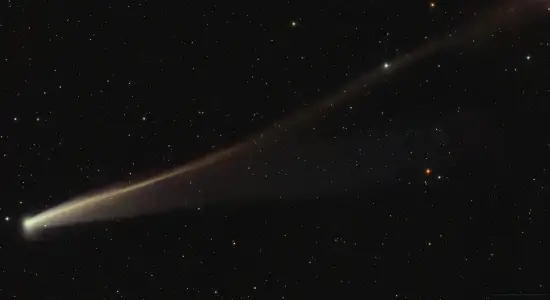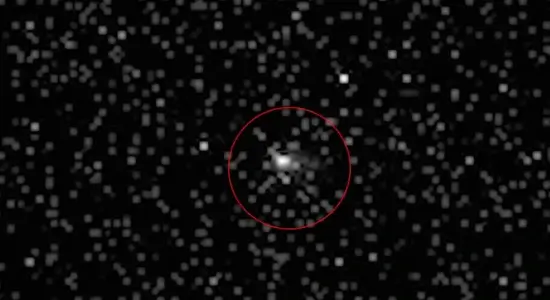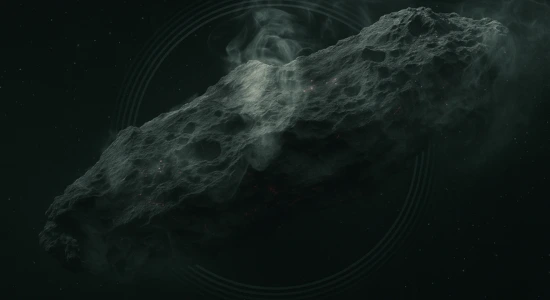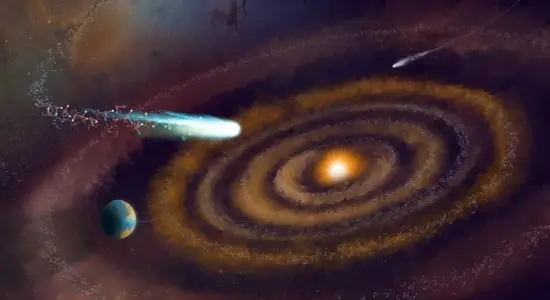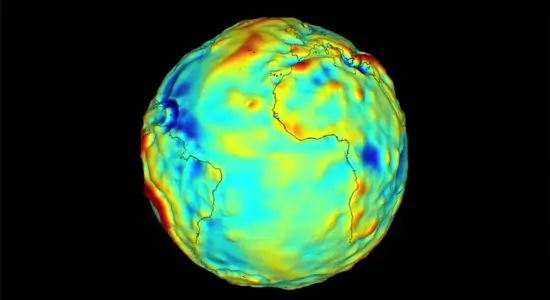How Cataclysmic Events Could Explain the Moon’s Magnetic Rocks
The Moon has long been a subject of fascination and study for scientists, particularly its mysterious magnetic rocks. For years, these enigmatic lunar rocks have puzzled researchers, who have been trying to determine their origin and significance. Recent studies, however, suggest that these rocks may be the result of an enormous cataclysmic event that occurred billions of years ago.
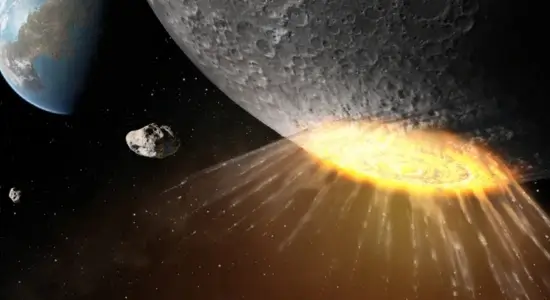 “Could an impact provide an explanation for the long-standing mystery of the Moon?” Image credit: LPI/David A. Kring and Daniel D. Durda
“Could an impact provide an explanation for the long-standing mystery of the Moon?” Image credit: LPI/David A. Kring and Daniel D. Durda
These magnetic rocks, found in several regions on the Moon, show signs of strong magnetism—something that is particularly unusual considering the Moon doesn’t currently have a strong magnetic field like Earth. Researchers have long speculated about how these rocks could have become magnetized, with theories ranging from cosmic radiation to ancient magnetic fields.
A New Theory: A Cataclysmic Event
New evidence points to the possibility that the magnetization of these lunar rocks might be linked to a massive event in the Moon’s early history. According to recent research, these magnetic rocks could have been the result of asteroid impacts or other violent cosmic events that produced intense heat, which in turn could have caused these rocks to magnetize.
This theory is supported by evidence from lunar samples brought back to Earth by the Apollo missions, which show that some lunar rocks possess magnetic properties similar to those found in meteorites. It is believed that such cosmic collisions might have temporarily induced magnetic fields on the Moon, magnetizing certain rocks for millions of years.
The Impact of Lunar Magnetism
The discovery of these magnetic rocks provides a crucial piece of the puzzle when it comes to understanding the early history of the Moon. If these rocks were indeed the result of a cataclysmic event, it could suggest that the Moon experienced a period of intense bombardment during the early days of the solar system—a period known as the Late Heavy Bombardment. This was a time when the Moon and other celestial bodies were struck by numerous asteroid impacts, which may have significantly altered their surfaces.
Understanding how these impacts affected the Moon could help scientists learn more about the formation and evolution of the Earth-Moon system, as well as the history of cosmic events that have shaped the solar system.
What Does This Mean for Our Understanding of the Moon?
These new findings are a game-changer in the field of lunar research. The idea that a cataclysmic event might be responsible for the Moon’s magnetic rocks opens up new avenues for research. It offers a potential explanation for the Moon’s ancient magnetism and gives scientists more insight into the forces that shaped our nearest celestial neighbor.
While the exact nature of the event that caused these magnetic rocks remains a mystery, it’s clear that these discoveries are helping to unlock the secrets of the Moon’s past and its dramatic history in the early days of the solar system.
Fun Fact:
Did you know that the Moon’s lack of a global magnetic field is one of the key differences between Earth and its closest neighbor? While Earth’s magnetic field helps protect us from harmful solar radiation, the Moon’s lack of this protection might have contributed to the mysterious state of its magnetic rocks.
Want to keep exploring the mysteries of the Moon and beyond? Subscribe to our newsletter for the latest discoveries in space science and lunar research
ref : IFLScience

